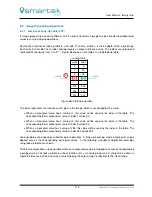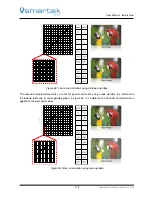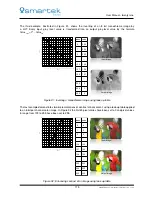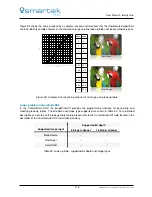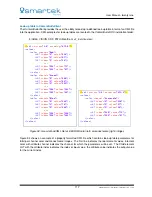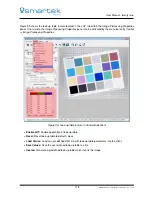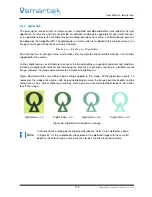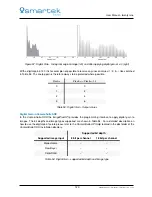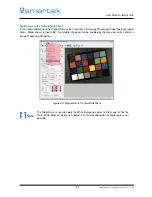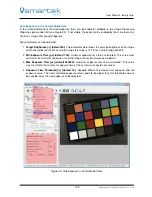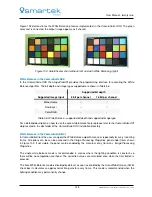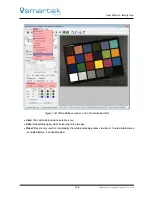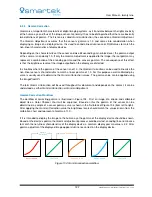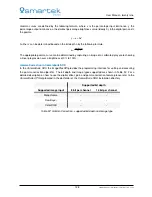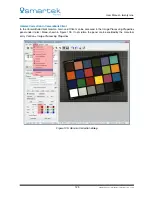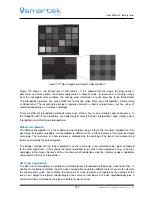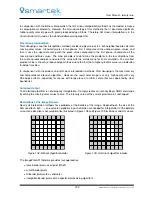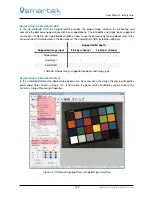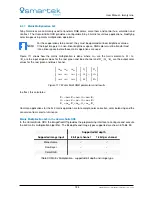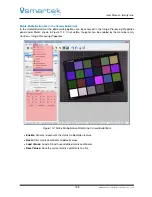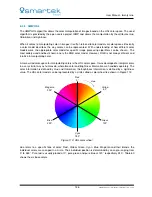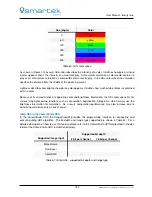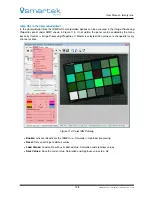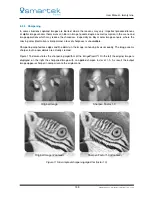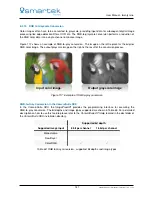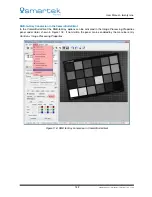
User Manual - twentynine
8.2.5
Gamma Correction
Gamma is an important characteristic of digital imaging systems, as it translates between the light sensitivity
of the human eye and thus of the image sensor. Generally it has to be distinguished that there are basically
two definitions of gamma. The first one is called
Gamma Correction
, the second one
Gamma Adjustment
.
The
Gamma Adjustment
assumes that the sensor’s gamma is 1.0 and comes into consideration when
displaying an image on a display device. It is used to encode linear luminance or RGB values to match the
non-linear characteristics of display devices.
Depending on the characteristics of the sensor and also influenced by gain or black level, the gamma output
of the camera is not ideally 1.0. If only the Gamma Adjustment is applied to the image, the real gamma may
represent a combination of the encoding gamma and the sensor’s gamma. The consequence of this effect
is that the brightness levels of the image outputted on the display are distorted.
In situations where the gamma of the sensor is not 1.0, the
Gamma Correction
can be used to linearize the
non-linear sensor’s characteristics to match a linear gamma of 1.0. For this purpose a well calibrated gray
scale is usually used to determine the
Gamma Correction
values. The gamma value can be applied using
the
ImageProcAPI
.
The term
Gamma Correction
will be used throughout this document and depends on the context, it can be
understood as either
Gamma Correction
or
Gamma Adjustment
.
Gamma Correction Workflow
The workflow of correcting gamma is illustrated in Figure 104. First an image of a known and calibrated
object like a Color Checker chart will be captured. Based on this the gamma of the sensor can be
determined, a sample of a sensor gamma curve is shown in the first block of Figure 104 (from left to right).
After applying the
Gamma Correction
value the brightness levels should match the values known from the
calibration chart and represent a Gamma of 1.0.
If it is intended to display the image to the human eye the gamma of the display device should be known.
Based on the device’s gamma the
Gamma Adjustment
process could be started, encoding linear luminance
to match the non-linear characteristics of the display device; a common display gamma value is 2.2. After
gamma adjustment the displayed image appears luminance correct on the display device.
Sensor Gamma
Gamma 1.0
Adjusted Gamma
Display Gamma
Gamma 1.0
Gamma
Correction
Gamma Adjustment
Figure 104: Gamma correction workflow
127
SMARTEK Vision | User Manual - twentynine | Doc. v1.0.2

